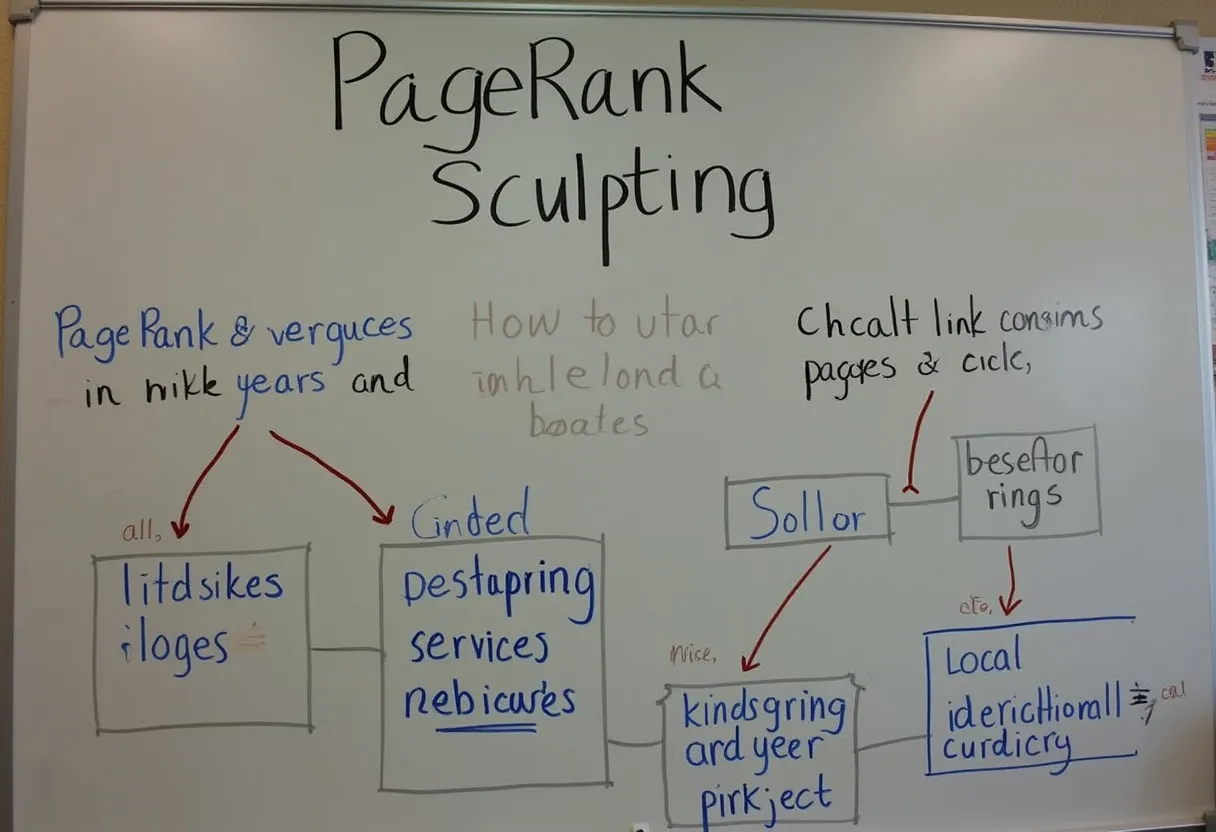Detailed Outline for an Article on PageRank Sculpting
Definition
PageRank Sculpting: PageRank Sculpting is a technique used in SEO to manipulate the flow of PageRank within a website. It involves controlling the distribution of link equity (or “link juice”) from one page to another through various methods, such as using the nofollow attribute. The goal is to optimize the flow of a website’s popularity stream to maximize available PageRank.
How It Works
Concept and Mechanism
PageRank sculpting relies on the idea that PageRank is distributed equally among all the links on a page. For example, if a page with a PageRank value of 10 links to five other pages, each linked page would receive a PageRank value of 2. By using the nofollow attribute on some links, the intention was to concentrate the PageRank flow to the remaining links.
Historical Use of Nofollow Attribute
Before 2009, SEOs used the nofollow attribute to prevent link equity from being passed to certain pages, such as service pages (e.g., terms and conditions, privacy policy), and instead direct it to more important pages like product pages.
Changes by Google
In 2009, Google altered the rules of inheritance for PageRank, rendering the traditional method of PageRank sculpting ineffective. Now, even if some links are marked as nofollow, the PageRank is still divided equally among all links, including those with the nofollow attribute.
Why It Matters
Impact on SEO Strategies
PageRank sculpting was once considered a way to optimize a website’s internal link structure to improve rankings. However, since Google’s changes, it is no longer a viable or recommended strategy. Instead, focus has shifted to creating great content, ensuring a user-friendly and crawlable site architecture, and using intuitive navigation and search-engine-friendly URLs.
User Experience and Site Architecture
The importance of a well-structured site architecture cannot be overstated. Ensuring that users and search engines can easily navigate and access all pages on the site is crucial for both user experience and search engine rankings.
Compliance with Google Guidelines
Attempting to manipulate PageRank through link schemes can violate Google’s Webmaster Guidelines, potentially leading to penalties. It is essential to adhere to these guidelines to maintain a healthy and compliant website.
Best Practices
Focus on Quality Content
Prioritize creating high-quality, link-worthy content that naturally attracts links from other websites. This is more effective in improving PageRank than attempting to sculpt it internally.
Optimize Site Architecture
Ensure your site has an intuitive navigation system and is easily crawlable by search engines. This includes using user- and search-engine-friendly URLs and placing important content in accessible locations.
Selective Use of Nofollow
While PageRank sculpting is no longer effective, there may still be cases where using the nofollow attribute is beneficial, such as for links to shopping carts, login pages, or other user-specific content that is not valuable for search engine indexing.
Natural Link Distribution
Allow PageRank to flow naturally within your site. Avoid attempting to manipulate it through artificial means, as this can lead to unintended consequences and is not in line with current SEO best practices.
By following these guidelines, website owners can ensure they are optimizing their site’s performance and user experience while adhering to Google’s guidelines and best practices in SEO.
Related Terms
- 301 Redirect: A permanent redirect from one URL to another, ensuring that link equity is passed to the new URL.
- 302 Redirect: A temporary redirect from one URL to another, which typically does not pass link equity.
- Canonical URL: An HTML element used to prevent duplicate content issues by specifying the preferred version of a webpage.
- Internal Link: A hyperlink that points to another page on the same website, helping to distribute PageRank and improve navigation.
- Internal Link Optimization: The process of strategically placing internal links to enhance user experience and SEO value.
- Link Juice: The SEO value or authority passed from one page to another through hyperlinks.
- Link Sculpting: Another term for PageRank sculpting, aiming to control the distribution of link equity within a site.
- Nofollow: An HTML attribute used to tell search engines not to pass link equity through a specific link.
- PageRank: An algorithm used by Google to rank web pages based on their link popularity and other factors.
- Redirect Chain: A series of redirects that occur between the original URL and the final destination URL, which can impact SEO if not properly managed.
Conclusion
While PageRank sculpting once held promise as a technique to optimize internal link distribution, it has become largely obsolete due to changes in Google’s algorithms. Website owners and SEO professionals should focus on creating high-quality content, ensuring a well-structured site architecture, and adhering to Google’s guidelines to achieve the best results. By doing so, they can optimize their site’s performance, improve user experience, and maintain compliance with search engine standards.



